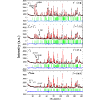Going Nordic—Can the Nordic model tackle grand challenges and be a beacon to follow?
IF 3.2
2区 社会学
Q1 LAW
引用次数: 7
Abstract
Nordic countries are known for having extensive welfare services, a highly compressed wage structure owing to strong social partners, as well as effective regulation and governance in public administration. Various typologies capture aspects of the institutional features of families of nations across various policy areas, showing that there is a specific Nordic variant of political economy. While there is an extensive literature focusing on socio-economic outcomes in the Nordic countries, there is less scholarly focus on the linkages between the regulatory processes, and their policy output, in response to various challenges. This volume examines how exogenous challenges (market liberalization promoted by EU integration and the gig economy, as well as the COVID-19 pandemic) and endogenous challenges in the welfare state (regulation of child-care quality and retirement ages) are tackled in a selection of Nordic countries. After a bibliometric analysis on the state of the literature, features of the Nordic model are presented. Then, the contributions of the articles to the special issue are summarized, after which lessons for other models of political economy are pinpointed. We find that although there is high variation within the Nordics in the studies of the special issue, there is a trend whereby, over time, a broader range of actors involved in the policy and regulatory process. Although not perfect, challenges are solved incrementally and often at an early stage. In other words, the Nordic regulatory model is highly adaptable to different challenges. Thus, the Nordic model does present crucial lessons for other types of political economy.

走向北欧——北欧模式能解决巨大的挑战并成为效仿的灯塔吗?
北欧国家以拥有广泛的福利服务、由于强大的社会伙伴而高度压缩的工资结构以及有效的公共行政管制和治理而闻名。不同的类型学捕捉了不同政策领域的民族家庭制度特征的各个方面,表明存在一种特定的北欧政治经济学变体。虽然有大量文献关注北欧国家的社会经济结果,但较少关注监管过程与其政策产出之间的联系,以应对各种挑战。本卷探讨了在一些北欧国家如何应对外生挑战(欧盟一体化和零工经济推动的市场自由化,以及2019冠状病毒病大流行)和福利国家的内生挑战(对儿童保育质量和退休年龄的监管)。在对文献状况进行文献计量分析后,提出了北欧模式的特点。然后,对特刊文章的贡献进行总结,并指出对其他政治经济学模型的借鉴。我们发现,尽管北欧国家对特别问题的研究存在很大差异,但有一种趋势,即随着时间的推移,参与政策和监管过程的行为者范围越来越广。虽然不完美,但挑战是逐步解决的,而且通常是在早期阶段。换句话说,北欧的监管模式对不同的挑战具有很强的适应性。因此,北欧模式确实为其他类型的政治经济学提供了重要的经验。
本文章由计算机程序翻译,如有差异,请以英文原文为准。
求助全文
约1分钟内获得全文
求助全文
来源期刊

Regulation & Governance
Multiple-
CiteScore
7.80
自引率
10.00%
发文量
57
期刊介绍:
Regulation & Governance serves as the leading platform for the study of regulation and governance by political scientists, lawyers, sociologists, historians, criminologists, psychologists, anthropologists, economists and others. Research on regulation and governance, once fragmented across various disciplines and subject areas, has emerged at the cutting edge of paradigmatic change in the social sciences. Through the peer-reviewed journal Regulation & Governance, we seek to advance discussions between various disciplines about regulation and governance, promote the development of new theoretical and empirical understanding, and serve the growing needs of practitioners for a useful academic reference.
 求助内容:
求助内容: 应助结果提醒方式:
应助结果提醒方式:


